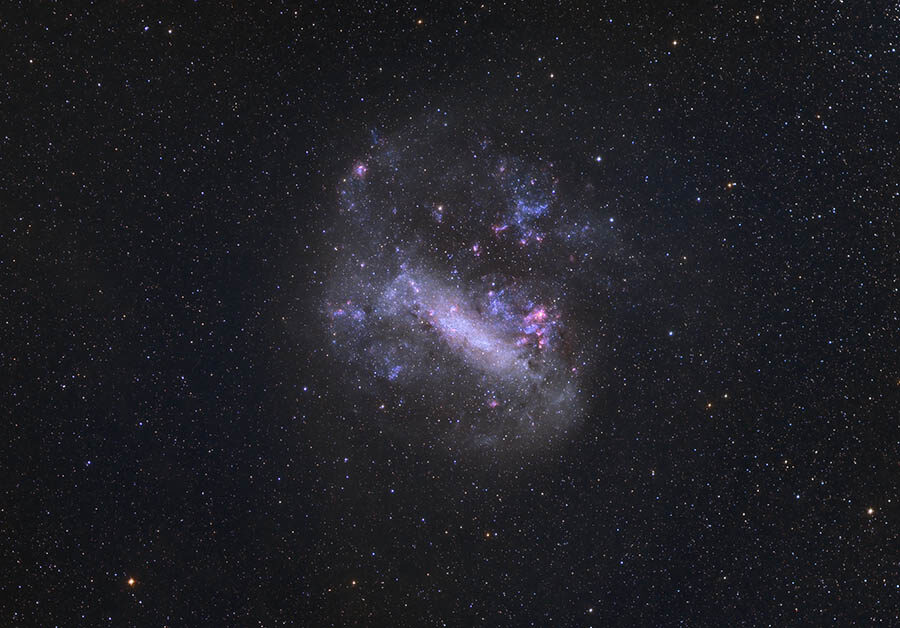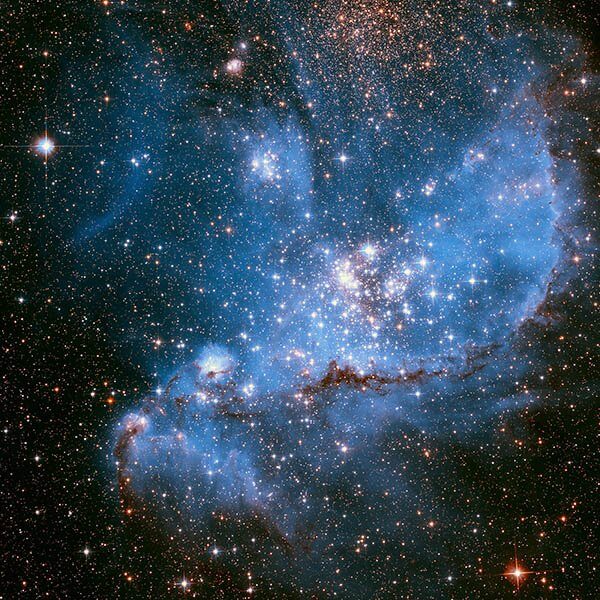10 Magellanic Clouds Facts | Large & Small Magellanic Cloud
The Magellanic Clouds are two galaxies located closely to each other. They’re best viewed from the Southern hemisphere, and the larger of the two is around twice the size of the smaller. Both the Large Magellanic Cloud and the Small Magellanic Cloud are two of the closest galaxies to our planet Earth. So, let’s look at some facts about the Magellanic clouds.
- They were originally both classified as irregular dwarf galaxies. However, in recent years astronomers have now said that the Large Magellanic cloud looks more like a barred spiral galaxy. The Small Magellanic cloud is still classified as an irregular galaxy, although it does have a weak bar across its center.
- The large Magellanic cloud is one of the closest galaxies to the planet Earth. It is about 163,000 light years away from us. This makes the Small Magellanic cloud is around 200,000 light years away from Earth.
- Of course, the LMC is the large of the two galaxies, with a radius of 7,000 light years. The SMC is around half of this, with an estimated radius of 3,500 light years.
- We think that the Small Magellanic cloud used to be a satellite of the Large Magellanic cloud in the past. However, nowadays we think it is may be a satellite of our galaxy, the Milky Way.
- The first writings that we have about the Large Magellanic cloud come from Persian astronomer Abd al-Rahman al-Sufi. He is also responsible for the first recorded sighting of the Andromeda galaxy.
- The Small Magellanic cloud was also recorded at this time – it is easily visible from the Southern Hemisphere, even if you aren’t using a telescope.
- Even though the SMC has a radius of only 3,500 light years, it still contains more than a billion stars. This sounds like a lot, but when you consider that Andromeda has more than a trillion stars, it isn’t that much.
- The Large Magellanic Cloud is found in between two main constellations – Dorado and Mensa.
- However, the Small Magellanic cloud is positioned between the constellations Tucana and Hydrus.
- The main thing that is different about the Magellanic clouds in comparison to our galaxy is that they have a high volume of gases like Hydrogen and Helium.
- The Hubble Space telescope has managed to get one of its most colorful photos from the Magellanic clouds, which contains more than 10,000 stars in the image.
Originally said to be an irregular cloud, upon closer inspection we can clearly see that it has a bar across it’s center, making it a barred spiral galaxy.

The LMC is also home to the Tarantula Nebula, which is fantastic to look at. It is actually used by astronomers to learn about star formation, as it is highly active and creates a lot of stars. So, we learn about this kind of thing from other galaxies, and then apply the same premises to our own Milky Way.
Like many other irregular galaxies, the Small Magellanic Cloud is primarily made up of dust and gas. There is also a bridge of gas that connects the SMC and the LMC together.

The Small Magellanic cloud is known for it’s large amount of X-ray binary stars. These are essentially a combination of a normal star and a collapsed star/ When they get too close to each other, they produce X-rays.
The Tarantula Nebula is found in the Large Magellanic cloud – it is a region which we can see in it’s South-East corner. This nebula is considered to be one of the most spectacular in our night sky. It was first seen in the 1700s due to its high luminosity. It is an area of the galaxy has that a very high production of stars.
Well, the closer of the two galaxies to our galaxy the Milky way is the LMC. Astronomers have predicted that it could be anywhere between 150-170,000 light years away from us. However, in recent years we have discovered Price Whelan 1 only 100,000 light years away. This cluster may mean that it is closer to us than we thought.
As I said earlier, the first writing of the Magellanic clouds goes over a thousand years back to Persian Al-Sufi. However, they take their name from famous Portuguese explorer Ferdinand Magellan, who was also the man who named the Pacific ocean.
You can find the Magellanic clouds by looking for the constellations that they are in. The Large Magellanic cloud is between Mensa and Dorado, whilst the Small Magellanic Cloud is between the constellations Hydrus and Tucana.
All in all, hopefully you’ve learned something about the Magellanic clouds. Their unique name definitely creates a lot of interest in these two interesting galaxies, and there is still a lot for us to learn about them. With a future collision potentially on the cards for the LMC and the Milky Way, it’s important for us to know as much as we can about these galaxies.